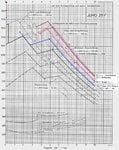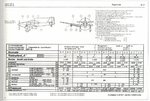The workhorse of the LW, Jumo 211 series of engines, was foremost to be found in bomber/attack planes, plus night fighters.
Wonder how well it would be suited to replace the other 2 (3?) lines of engines in the single engined fighter AC, namely the DB 601/605 (licence models included) and BMW-801. The time frame of interest is from early 1941 until mid 1944, when the Jumo 213 and DB 605AS become available in numbers.
Wonder how well it would be suited to replace the other 2 (3?) lines of engines in the single engined fighter AC, namely the DB 601/605 (licence models included) and BMW-801. The time frame of interest is from early 1941 until mid 1944, when the Jumo 213 and DB 605AS become available in numbers.


